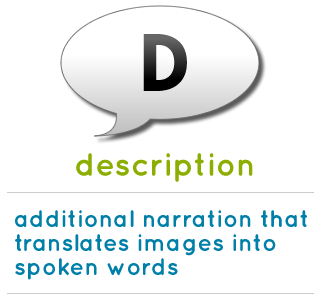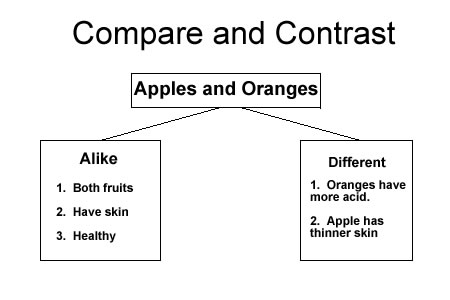W
hat is the National Reading Panel?
In 1997, Congress asked the Director of the National Institute of Child Health and Human Development (NICHD), along with the Secretary of Education, to convene a national panel on reading. The National Reading Panel (NRP) was asked by Congress to assess the status of research-based knowledge about reading, including the effectiveness of various approaches to teaching children to read. The panel was made up of 14 people, including leading scientists in reading research, representatives of colleges of education, teachers, educational administrators, and parents. The NRP met over a period of two years to discuss their findings and prepare the results in two reports and a video titled, "Teaching Children to Read."
W
hat do the Panel's findings mean to teachers?
The Panel identified a number of instructional strategies that are very promising for teaching students with reading difficulties. Many of these teaching methods and approaches are ready right now for use in the classroom. In addition, the Panel provided extensive references that teachers can use to find appropriate and scientifically validated instructional methods. It also noted areas where more research is needed to determine objectively if teaching methods are effective.
W
hat research topics did the Panel examine?
The Panel concentrated on the following areas: Alphabetics, including the issues of phonemic awareness instruction and phonics instruction; Fluency; Comprehension, including vocabulary instruction, text comprehension instruction, and teacher preparation and comprehension strategies; Teacher Education and Reading Instruction; and Computer Technology and Reading Instruction.
W
hat is phonemic awareness (PA)?
Phonemes are the smallest units making up spoken language. English consists of about 41 phonemes. Phonemes combine to form syllables and words. A few words have only one phoneme, such as a (a) or oh (o). Most words consist of a blend of phonemes, such as go (g-o) with two phonemes,check (ch-e-ck) with three phonemes, or stop with four phonemes (s-t-o-p). Phonemic awareness refers to the ability to focus on and manipulate these phonemes in spoken words.
W
hat did the Panel conclude about phonemic awareness (PA)?
Scientific evidence shows that teaching children to manipulate the sounds in language (phonemes) helps them learn to read. This remains true under a variety of teaching conditions and with a variety of learners across a range of grade and age levels. The NRP concluded that teaching phonemic awareness to children significantly improves their reading when compared to instruction without any attention to phonemic awareness. Specifically, the results of experimental studies led the Panel to conclude that PA training led to improvement in students' phonemic awareness, reading, and spelling.
W
hat is phonics instruction?
Phonics instruction is a way of teaching reading that stresses learning how letters correspond to sounds and how to use this knowledge in reading and spelling. Phonics instruction can be provided systematically. Systematic phonics instruction occurs when children receive explicit, systematic instruction in a set of pre-specified associations between letters and sounds. Children are taught how to use these associations to read, typically in texts containing controlled vocabulary.
W
hat did the Panel conclude about phonics instruction?
The Panel determined that systematic phonics instruction leads to significant positive benefits for students in kindergarten through sixth grade and for children with difficulty learning to read. Kindergartners who receive systematic beginning phonics instruction read better and spell better than other children, and first graders are better able to decode and spell words. The students also show significant improvement in their ability to understand what they read. Similarly, phonics instruction helps older children spell and decode text better, although their understanding does not necessarily improve.
Reading fluency is one of several critical factors necessary for reading comprehension, but is often neglected in the classroom. If children read out loud with speed, accuracy, and proper expression, they are more likely to comprehend and remember the material than if they read with difficulty and in an inefficient way. Two instructional approaches have typically been used to teach reading fluency. One, guided repeated oral reading, encourages students to read passages out loud with systematic and explicit guidance and feedback from their teacher. The other, independent silent reading, encourages students to read silently on their own, inside and outside the classroom, with little guidance or feedback from their teachers.
W
hat did the Panel conclude about reading fluency?
Reading practice is generally believed to improve fluency, and two instructional approaches are usually used to practice reading: guided repeated oral reading and independent silent reading. The Panel determined that guided repeated oral reading has a significant and positive impact on word recognition, reading fluency, and comprehension for students of all ages. However, the Panel was unable to conclude that independent silent reading, as the only type of reading instruction, improves reading fluency. More research is needed to understand the specific influences that independent silent reading practices have on reading fluency.
W
hat are the components of reading comprehension?
Reading comprehension is very important to the development of children's reading skills and therefore to their ability to obtain an education. In carrying out its study of reading comprehension, the NRP noted three main themes in the research on the development of reading comprehension skills. First, reading comprehension is a complex cognitive process that cannot be understood without a clear description of the role that vocabulary development and vocabulary instruction play in the understanding of what has been read. Second, comprehension is an active process that requires an intentional and thoughtful interaction between the reader and the text (text comprehension instruction). Third, the preparation of teachers to better equip students to develop and apply reading comprehension strategies to enhance understanding is intimately linked to students' achievement in this area.
W
hat did the Panel conclude about reading comprehension?
Vocabulary development has long been considered important for reading comprehension. The Panel concluded that vocabulary should be taught both directly and indirectly. Repetition and seeing vocabulary words several times is also important. Learning in rich contexts, incidental learning, and the use of computer technology all help children develop larger vocabularies. A combination of methods, rather than a single teaching method, leads to the best learning.
As with vocabulary development, text comprehension is improved when teachers use a combination of reading comprehension techniques such as question answering, question generation, and summarization. When students are able to use them successfully, they perform better in recall, answering questions, generating questions, and summarizing texts.
The Panel found that intensive professional development is necessary so that teachers can learn to use reading comprehension strategies effectively. Preferably, teachers should receive formal instruction on strategies to teach reading comprehension as early as preservice. More research is needed on a number of issues, including which components of teacher preparation are most effective.
W
hat did the Panel conclude about teacher education and reading instruction?
The Panel determined that inservice professional development for teachers results in significantly higher achievement for their students. This is true for established as well as new teachers. More research is needed, however, to determine the best combinations of inservice and preservice training, the appropriate length of each, and how teachers should be supported over the long term to improve student performance. The relationship between the development of standards and teacher education is an important gap in current knowledge.
W
hat did the Panel determine about the value of computer technology to reading instruction?
The research reviewed by the Panel was too limited to make any strong recommendations about the value of computer technology to reading instruction. However, all the studies indicate positive results, suggesting that using computer technology for reading instruction is very promising. For instance, the addition of speech to computer-presented text, the use of hypertext, and the use of computers as word processors all show promise.





















